Introduction
In the highly competitive realm of banking, Business Process Management (BPM) has emerged as a game-changer for enhancing operational efficiency and elevating the customer experience. By streamlining workflows and aligning actions with strategic vision, banks can deliver consistent value. This article explores the crucial role of BPM in the banking industry, highlighting real-world examples and best practices.
It delves into the steps involved in optimizing processes, mapping and analyzing existing workflows, identifying bottlenecks and inefficiencies, developing optimization plans, implementing BPM solutions, and continuously improving and reengineering processes. With a focus on empowering banks to thrive in the digital age, this article emphasizes the benefits of BPM, including improved efficiency, enhanced customer experiences, compliance with security standards, and the ability to stay ahead of the curve in an evolving industry.
Why Business Process Management is Crucial in Banking
In the field of finance, where rivalry is intense, the integration of Business Process Management (BPM) is a game-changer for improving operational effectiveness and elevating client satisfaction. By implementing BPM, financial institutions can streamline their workflows, ensuring that every action aligns with their strategic vision of delivering value consistently and effectively.
Take TBC Bank, for example, which has embraced the mission to simplify people’s lives. By implementing BPM, TBC Bank has expedited the introduction of digital products, greatly enhancing the experience for both customers and branch employees. Similarly, M&T Bank, with its proud tradition of innovation, has set a precedent in the industry by establishing Clean Code standards to maintain software quality and compliance, thus safeguarding the bank’s operations.
In the ever-evolving landscape of banking technology, the importance of BPM cannot be overstated. It’s not only about automating repetitive tasks; it’s about comprehending and improving business procedures to adjust and expand. This holistic approach to BPM considers the totality of an organization’s ecosystem, harmonizing its people, technology, culture, and external factors to drive collective success.
Scotty Elliott, chief distribution officer at AmeriLife, emphasizes the importance of integrating business procedures within a unified framework. He emphasizes, ‘No business operation can function in a silo and must be connected strategically within a holistic paradigm that offers balance, optimization, and fortitude to meet targeted outcomes.’ This sentiment is echoed by experts who advocate for bank digital transformation, including the introduction of mobile and online financial services, as a means to revolutionize the way financial companies operate.
Ongoing research, like the systematic literature review on machine learning in BPM, highlights the academic curiosity and interdisciplinary aspect of BPM, emphasizing its notable economic influence on management. These studies reveal a concentration on resource allocation and scheduling issues, highlighting the potential for further exploration into the optimization of business processes within the financial sector.
In conclusion, BPM is not just a tool for efficiency; it’s a strategic imperative for banks that aspire to thrive in today’s digital age. By embracing Business Process Management (BPM), financial institutions can ensure they remain agile, customer-centric, and ahead of the curve.
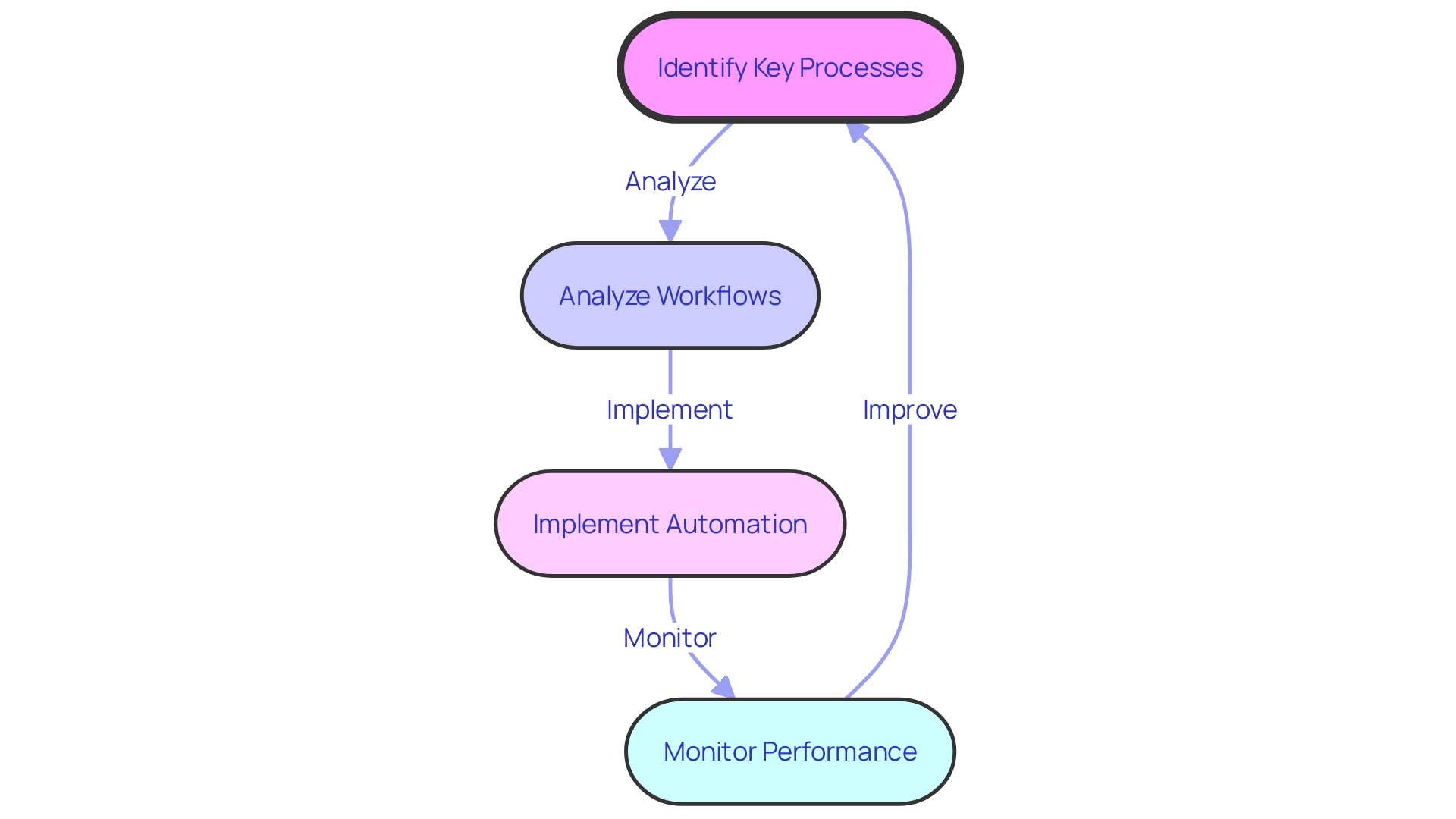
Step 1: Identifying Processes for Optimization
The incorporation of Business Process Management (BPM) in financial and insurance institutions is a transformative strategy aimed at enhancing operational excellence. At the forefront of this initiative is the accurate identification of the activities that warrant optimization. A meticulous examination of the current workflows is imperative to pinpoint inefficiencies and error-prone activities. One illustrative example is TBC Bank, Georgia’s premier financial institution, which embraced the challenge of expediting digital product delivery to elevate the experience for customers and staff alike. Their approach underscores the necessity of understanding the operational realities distinct from theoretical process documentation in order to make informed, swift decisions that align with the overarching goals of the enterprise.
The banking industry, in its pursuit of innovation and efficiency, is concurrently navigating the incursion of Big Tech firms into financial services. This introduces an element of vendor collaboration and competitive dynamics that must be considered in the operational calculus. Organizations like Cross River Bank have effectively established themselves as foundations in the Banking-as-a-Service (BaaS) landscape by providing a range of lending, payment, and card services, thus demonstrating the potential for traditional banks to adapt and flourish in the face of technological disruption.
In this context, it is crucial for financial institutions and insurance companies to embrace a structured methodology such as CRISP-DM, which represents ‘Cross Industry Standard Approach for Data Mining’, a neutral approach to enhancing procedures regardless of the industry sector. Furthermore, leveraging data analytics and embracing concepts such as Data Envelopment Analysis (DEA) can aid in setting clear targets and comprehending the intricate relationships between various operational inputs and outputs, leading to substantial performance enhancements.
Step 2: Mapping and Analyzing Existing Processes
The journey of workflow enhancement starts with a thorough examination of the current workflow. This stage is crucial for banks looking to enhance their operational efficiency. It involves creating a workflow diagram, a visual mapping that illuminates the procedure from start to finish. The diagram will illustrate the sequence of actions, pinpoint who is accountable for each, and the methods employed to complete them. Such openness in procedures helps to reveal inefficiencies, redundancies, and bottlenecks.
For instance, data analysis plays a pivotal role in understanding and improving these workflows. The approach, akin to the steps outlined in a recent study on web-based data analysis, involves cleaning, analysis, and visualization of data. Banks must cleanse their data to remove inaccuracies, then analyze it to comprehend performance and finally visualize the results to effectively communicate insights. This methodology closely follows insights from a case study that utilized quantitative data analysis and statistical modeling to refine online datasets.
Furthermore, the most recent developments in technology platforms, such as the one introduced by Celonis, provide financial institutions with standardized and structured frameworks to handle data, merging it into a unified and coherent perspective. This innovation facilitates in defining elements and introducing an API layer, enabling the development of applications or integration with large language models, thereby streamlining data analysis.
To thoroughly document business procedures, banks must also create comprehensive procedure documentation. It involves delineating each step necessary to accomplish a task, reducing operational ambiguity and ensuring consistency in quality across various departments.
As a practical guide, let’s consider the flowchart: a common diagram type that will serve as our roadmap through the documentation of the procedure. The first step is to determine the purpose and scope of the diagram, addressing essential inquiries about the objectives of the procedure, the intended audience, and the desired outcomes.
In the landscape of financial services, where Big Tech firms are increasingly becoming both partners and competitors, financial institutions must leverage such tools and techniques to stay ahead. By implementing a methodical strategy for optimization, financial institutions can navigate through the intricacies of data breaches and regulatory compliance, ensuring durability and preserving client confidence.
In the end, by combining these sophisticated data analysis methods with a transparent representation of workflows, banks can establish specific goals for improvement, in line with the principles of counterfactual analysis in machine learning, to enhance overall performance.

Step 3: Identifying Bottlenecks and Inefficiencies
Financial institutions are constantly improving their operational workflows, striving for a smooth experience for both clients and staff. During optimization, a crucial step is to reveal the bottlenecks that hinder service delivery. This involves scrupulous analysis to uncover inefficiencies such as manual tasks that could be automated, unnecessary procedural redundancies, or workflow delays. Consider TBC Bank, for example, which embraced the challenge of making banking simple for its users by streamlining its procedures to expedite digital product delivery, highlighting the impact of procedure improvement on customer satisfaction.
Similarly, Deutsche Bank’s ambitious IT system consolidation illustrates the scale at which process optimization can occur. By merging two IT systems into one and moving to cloud-based solutions with Google Cloud, they exemplified how modernizing infrastructure is integral to improving operational efficiency.
Across the globe, financial institutions are recognizing the necessity of these improvements. With the financial industry at a proverbial ‘hype cycle’ inflection point, financial institutions are keen to learn from successful case studies, applying AI-driven personalization and other innovative strategies to stay competitive. The migration towards such efficient, tech-forward solutions is partly driven by the necessity to stay relevant in the face of Big Tech’s increasing encroachment into financial services.
By tackling these inefficiencies, financial institutions can create opportunities for more focused solutions that address the core of the issue, reducing wastage and improving productivity. This approach is critical in maintaining the agility needed to adapt to an ever-changing financial landscape and meet the growing expectations of tech-savvy consumers and businesses.
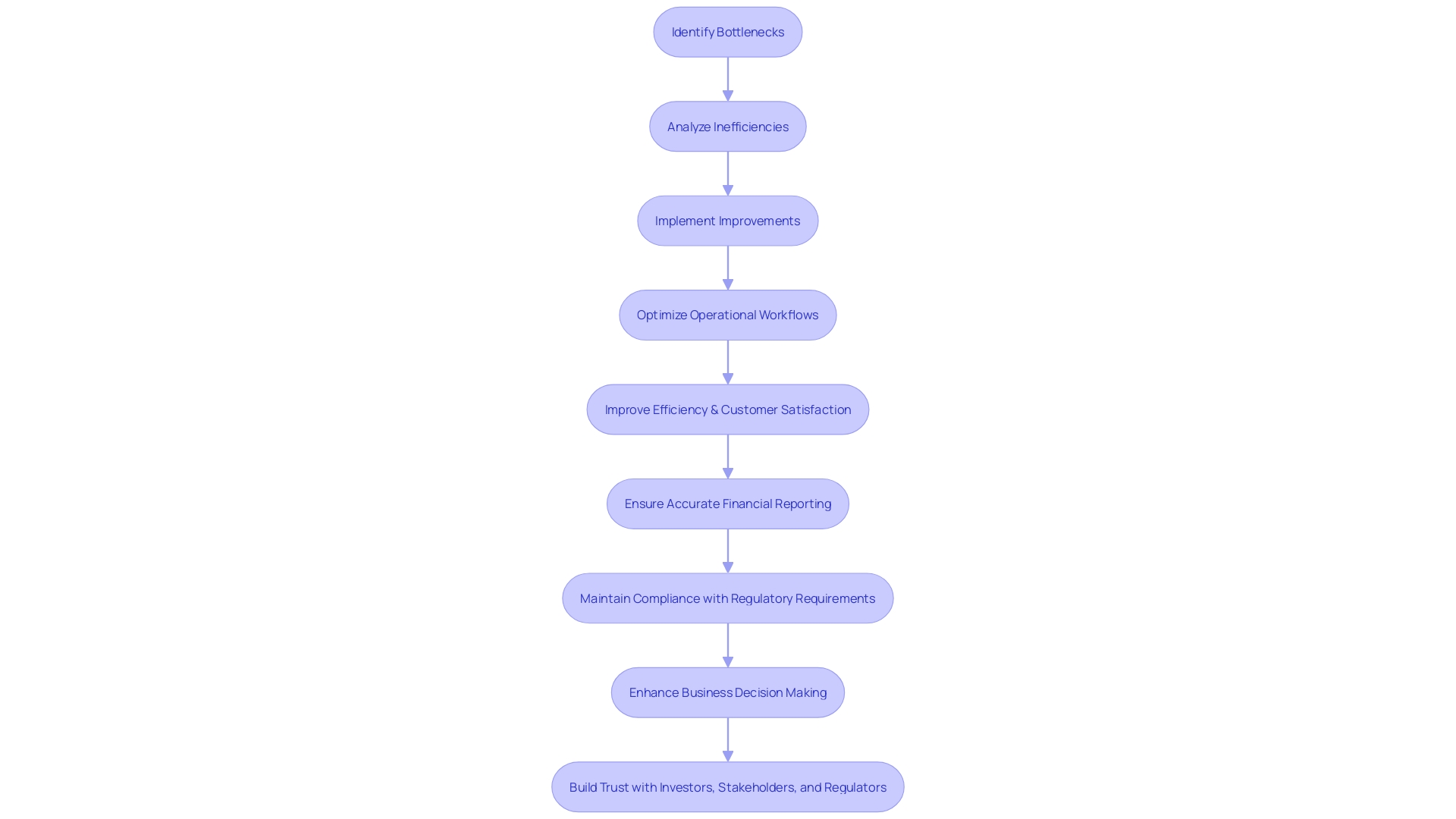
Step 4: Developing an Optimization Plan
To improve their operational effectiveness, financial institutions must carefully develop an optimization strategy that tackles the particular challenges and inefficiencies uncovered during analysis. This action plan should encompass a blend of process simplification, automation of routine tasks, adoption of cutting-edge technologies, and workflow redesign. By customizing the plan to meet the bank’s distinctive requirements and aspirations, it can seamlessly dovetail with the broader business objectives.
For instance, TBC Bank in Georgia, which began as Tbilisi Business Centre in 1992, has continually strived to expedite the launch of digital products in its mission to simplify the lives of customers and employees. TBC Bank’s commitment to improving the customer experience is a testament to the effectiveness of a well-planned optimization strategy. Similarly, the rise of computational tools called optimizers has transformed our way of problem-solving, enabling us to maximize utility functions and discover the optimal solution to complex issues, a concept that financial institutions can incorporate into their optimization strategies.
The financial industry is buzzing with the arrival of Big Tech firms like Amazon, Apple, and Google entering the banking and payments sphere, posing both a challenge and an opportunity for traditional financial institutions to innovate. Banks are now looking towards successful case studies, such as those from the annual program submissions that span a global landscape, to guide their optimization efforts.
Further illustrating the trend towards digital transformation, Cross River Bank, an over $8 billion asset powerhouse, exemplifies successful banking-as-a-service (BaaS) practices. Meanwhile, First Fed Bank’s compliance enhancement measures, as mandated by the FDIC, highlight the importance of a robust optimization plan that accounts for regulatory requirements.
As the financial services industry reaches an inflection point, many financial institutions are cautiously approaching the adoption of AI and other advanced technologies, seeking to learn from the experiences of their peers. With the potential of artificial intelligence to create personalized experiences, financial institutions are exploring strategies to effectively promote and offer additional services. The evolution of financial institution statements from traditional printouts to dynamic electronic documents further underscores the industry’s shift towards innovative communication methods that can bolster customer relationships and provide valuable insights.
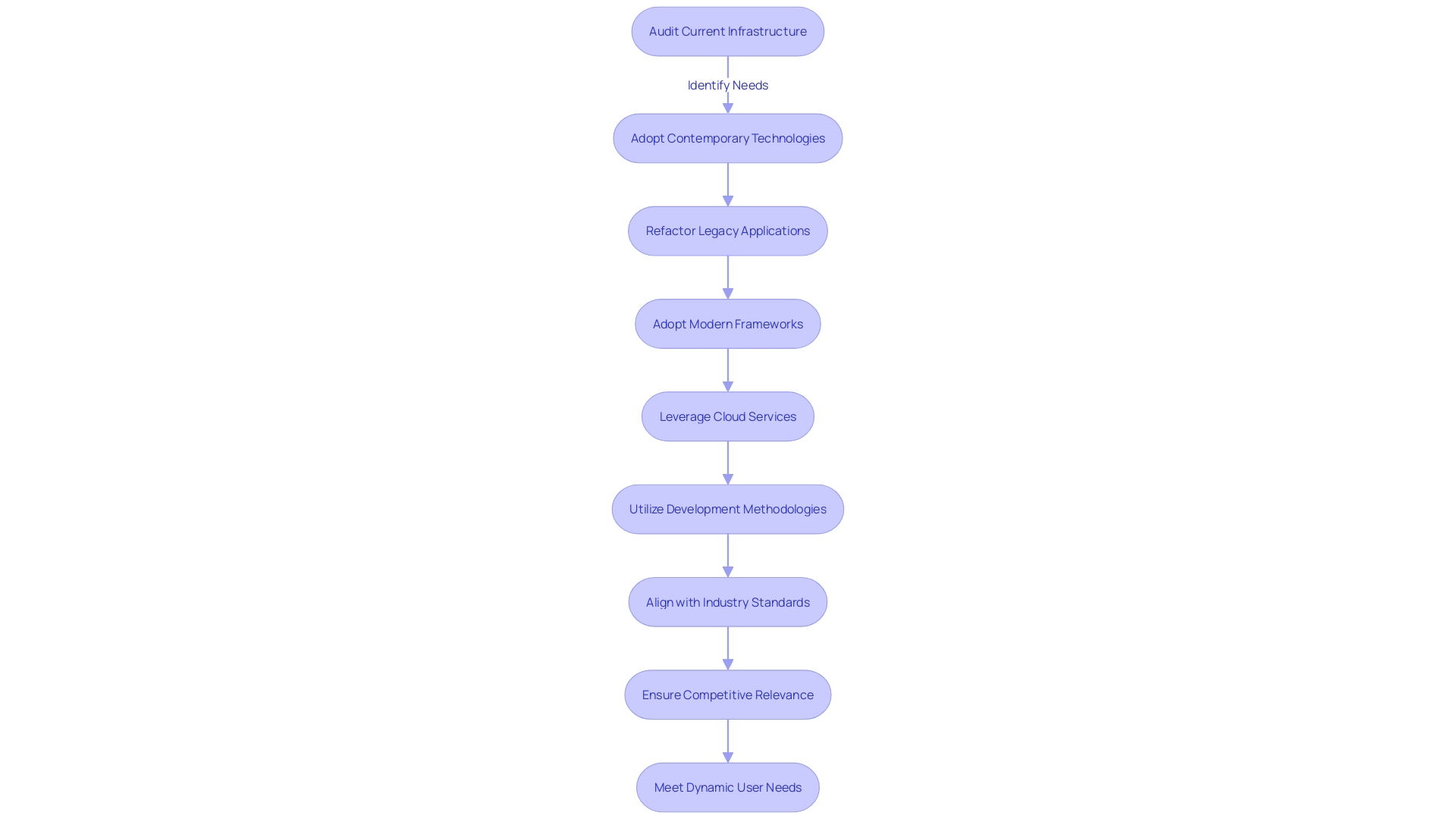
Step 5: Implementing BPM Solutions
As banks incorporate Business Process Management (BPM) solutions, meticulous execution is key. This often involves rolling out workflow automation tools, integrating various systems, and perhaps introducing robotic process automation (RPA). The deployment phase demands rigorous planning, comprehensive testing, and dedicated training to ensure seamless integration and minimal disruption to daily activities. Moreover, establishing definitive performance metrics is essential to gauge the success of these BPM solutions. Significantly, TBC Bank in Georgia and M&T Bank in the United States demonstrate institutions that have embraced such digital transformations, prioritizing user experience and internal efficiency. The implementation of these technologies not only improves operational efficiency but also complies with strict security and regulatory standards, thereby protecting sensitive data and transactions essential to the financial sector.
Step 6: Reviewing and Analyzing BPM Implementation
To ensure the robustness of BPM solutions, it is essential to engage in a meticulous evaluation of their performance post-implementation. This entails the vigilant monitoring of established performance metrics, juxtaposing them against initial benchmarks. Such diligence facilitates the identification of discrepancies and zones necessitating enhancement. Institutions like TBC Bank, with its dedication to making the lives of its clients easier, and M&T Bank, a steadfast organization with over 165 years of service, emphasize the importance of ongoing progress in operational efficiency. As exemplified by M&T Bank’s adherence to Clean Code standards, the banking sector’s digital metamorphosis necessitates uncompromising quality and compliance to avert dire security breaches and operational disruptions. Considering the fast technological advancement and the growing digital customer experience, financial institutions are required to not only embrace state-of-the-art technologies but also continuously improve their BPM efforts to guarantee the security of sensitive data and transactions. By persistently refining BPM implementations, banks can stride towards pinnacle efficiency, mirroring the industry’s shift towards flexible, continuous delivery of value.
Step 7: Continuous Improvement and Reengineering
The financial sector is in a state of perpetual motion, with advances in technology and shifts in consumer expectations driving the need for continuous process improvement. A prominent instance is TBC Bank, which has been at the forefront of improving digital product delivery, thereby making financial services more accessible and convenient for clients. Similarly, M&T Bank has set the bar high by instituting ‘Clean Code’ standards, ensuring their software’s maintainability and performance, a crucial step in safeguarding against security breaches and maintaining regulatory compliance in a digitized environment.
Open banking, a concept that heralds a more interconnected and user-friendly banking ecosystem, is gaining traction in the U.S., symbolizing the sector’s rapid digital evolution. Meanwhile, traditional financial institutions face the growing presence of Big Tech companies, like Amazon and Apple, in the financial space, further emphasizing the urgency for constant innovation.
To successfully navigate this revolutionary period, financial institutions must set distinct standards and performance indicators right from the beginning, concentrating not only on monetary results, but also on client contentment and operational effectiveness. The implementation of continuous delivery models allows financial institutions to promptly address market demands, with a focus on early user feedback and the deployment of minimum viable products to test new ideas.
Quantifying success in this digital adaptation is essential, with metrics extending beyond financial results to the effectiveness of digital initiatives and satisfaction of clients. As financial institutions continue to evolve, achieving a harmonious combination of financial well-being, operational effectiveness, and client contentment will be crucial for thriving in today’s competitive and fast-paced landscape of banking.
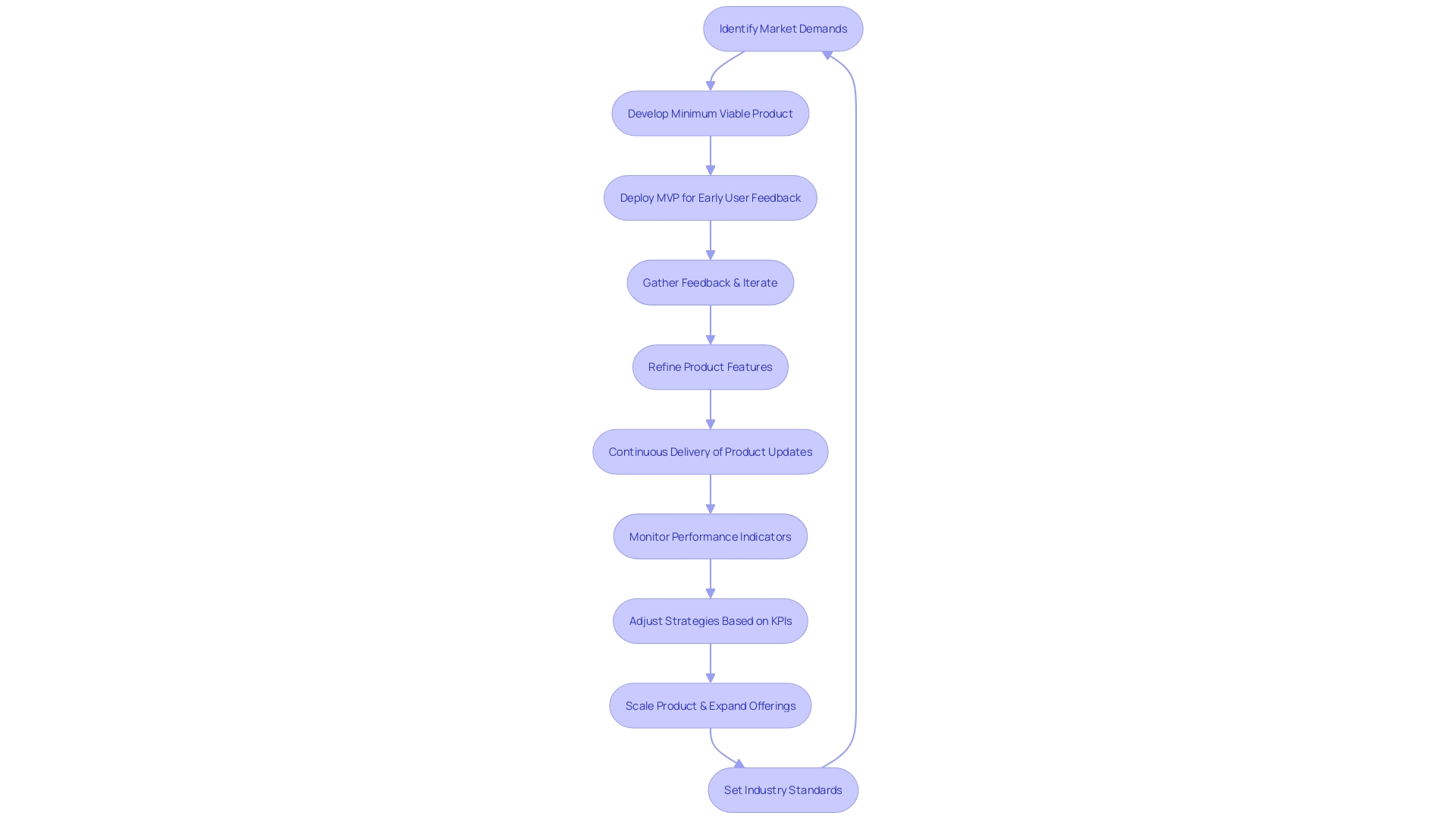
Best Practices for BPM Implementation in Banking
Optimal procedures for Business Process Management (BPM) in the financial industry are not solely centered on embracing novel technologies; instead, they involve reenvisioning operational structures to improve both user and staff interactions. A prime example is TBC Bank, which has revolutionized its digital product delivery to improve customer satisfaction. Similarly, M&T Bank has committed to ‘Clean Code’ standards to maintain the integrity and performance of its software, acknowledging the fast-paced digital transformation in the banking industry.
A pivotal element of this transformation is workflow automation, which reduces manual intervention and streamlines processes. By leveraging workflow automation, financial institutions can improve operational efficiency and flexibility, enabling them to promptly adapt to market fluctuations and client requirements. The transformative power of AI in financial services is another important factor, offering a plethora of opportunities for data-driven decision-making and tailored user experiences.
Moreover, banks are now recognizing the importance of inclusivity, with initiatives like CaixaBank’s ‘Braille Pack’ enabling visually impaired customers to access services seamlessly. This dedication to accessibility is a component of a wider movement towards removing obstacles and ensuring that financial services are accessible to all, in line with the principles of Environmental, Social, and Governance (ESG).
In conclusion, the successful implementation of BPM in the financial sector depends on a strategic combination of stakeholder involvement, clear goals, a culture of innovation, and leveraging cutting-edge technology to meet the high standards of security and regulation in the industry.
Benefits of BPM in Banking
Banks are under increasing pressure to keep up with the seismic shifts caused by digital transformation. This urgency is highlighted by the evolution of M&T Bank, a stalwart in the financial industry since 1856, which has embraced clean code standards across its organization to bolster the maintainability and performance of its software. Likewise, TBC Bank’s dedication to enhancing the digital banking experience for both consumers and employees showcases the move towards innovative financial services. These innovative approaches are not just about maintaining relevance; they’re about leading the charge in a world where client expectations are increasingly defined by personalized, seamless, and on-demand digital experiences.
The benefits of embracing Business Process Management (BPM) in this rapidly evolving landscape are multifaceted. In addition to providing enhanced operational efficiency and cost reduction, BPM also improves user experiences and ensures compliance with the highest security standards. As financial transactions become more digitized, the need for robust security measures grows. M&T Bank’s initiative to establish Clean Code standards is a testament to the importance of maintaining quality software to prevent security breaches and ensure smooth operations.
Moreover, the shift towards Straight Through Processing (STP) systems underscores the industry’s drive for efficiency. A report from the Association for Financial Professionals revealed that 46% of organizations are moving away from paper checks to electronic payments primarily to facilitate STP, emphasizing the demand for faster and error-free transaction workflows.
In the realm of client communications, banks like M&T Bank are redefining the future of bank statements. The introduction of electronic statements, which have evolved to include more features, reflects a broader trend of innovation in financial services. Customers now expect financial information to be delivered in a modern, cohesive manner, whether through digital channels or traditional formats.
The financial industry is not only adjusting to technological advancements and evolving consumer needs but also incorporating ideas like environmental, social, and governance (ESG) matters into their operations. This change towards accountable finance is another aspect of the sector’s metamorphosis, as clients progressively look for answers that correspond to their principles.
In summary, the integration of BPM solutions in banking is not just a response to the changing market conditions; it’s a strategic move to stay ahead of the curve. Banks that successfully implement these solutions will not only enhance their efficiency and decision-making capabilities but will also forge stronger customer relationships and establish a reputation for innovation and security in the digital age.
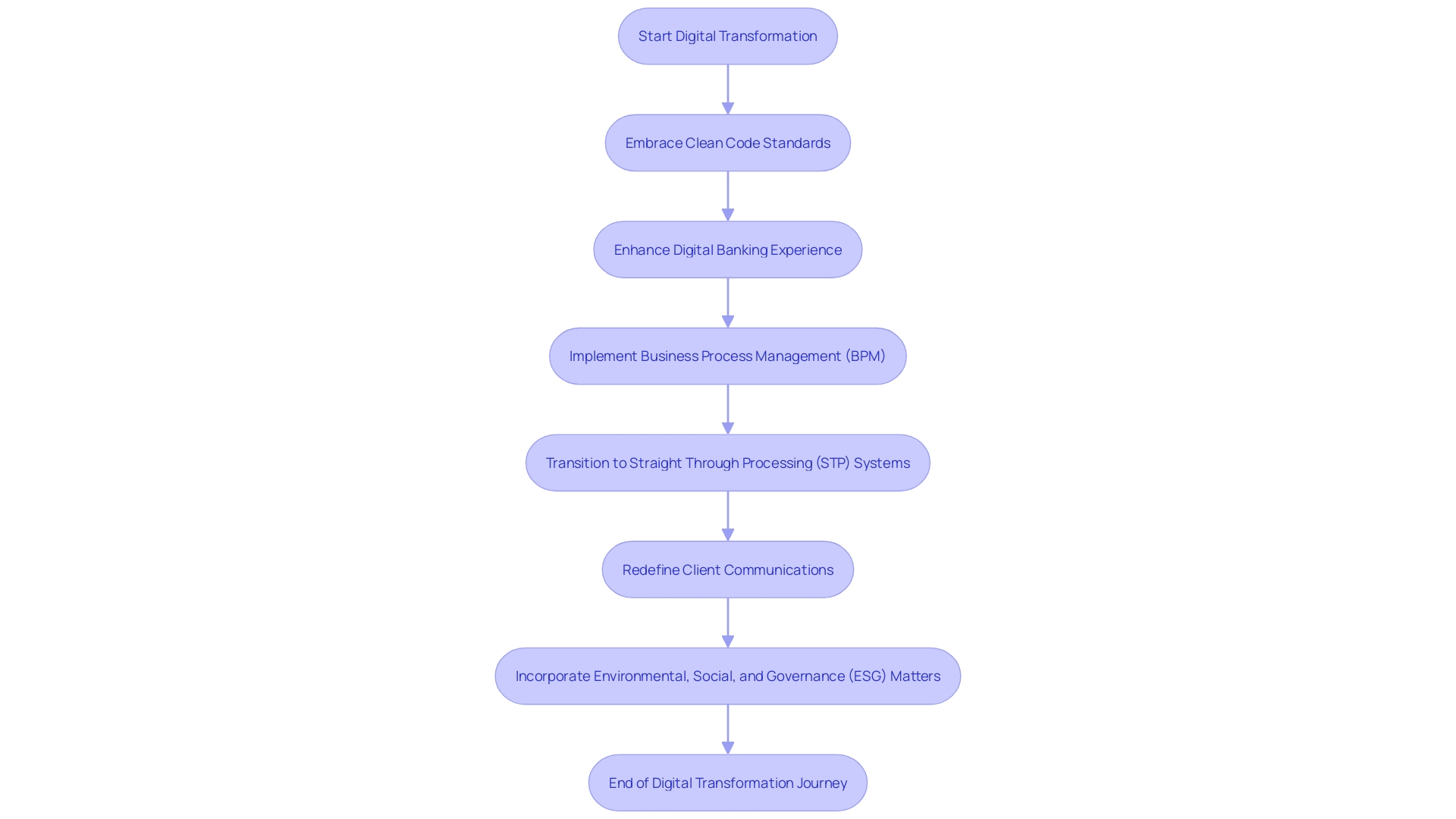
Conclusion
In conclusion, Business Process Management (BPM) is crucial in the banking industry for enhancing operational efficiency and elevating the customer experience. Real-world examples like TBC Bank and M&T Bank demonstrate the transformative power of BPM in streamlining workflows and delivering consistent value.
The steps involved in optimizing processes include identifying areas for improvement, mapping and analyzing existing processes, addressing bottlenecks and inefficiencies, developing an optimization plan, implementing BPM solutions, and continuously improving processes.
To optimize processes, banks must understand their operational realities, embrace structured methodologies, and leverage data analytics. Advanced technology platforms like Celonis offer standardized models for data processing and analysis.
By addressing bottlenecks and inefficiencies, banks can enhance service delivery and improve customer satisfaction. Implementing BPM solutions requires meticulous execution, including comprehensive testing and training.
Continuous improvement and reengineering are essential in the dynamic banking sector. Best practices involve reimagining operational frameworks, leveraging cutting-edge technology, and embracing automation and AI-driven solutions.
The benefits of BPM in banking are numerous, including improved operational efficiency, cost reduction, enhanced customer experiences, and compliance with security standards.
Overall, embracing BPM empowers banks to thrive in the digital age. By streamlining workflows, making informed decisions, and establishing a reputation for innovation and security, banks can stay ahead of the curve and deliver value to their customers consistently.

